
Browse an alphabetical list of photographs. These historical images portray people, places, and events before, during, and after World War II and the Holocaust.
<< Previous | Displaying results 1-50 of 2641 for "Photo" | Next >>
United Nations personnel vaccinate an 11-year-old concentration camp survivor who was a victim of medical experiments at the Auschwitz camp. Photograph taken in the Bergen-Belsen displaced persons camp, Germany, May 1946.
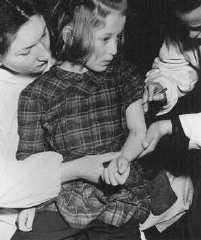
A 13-year-old orphan, a survivor of the Mauthausen concentration camp. Photograph taking following liberation of the camp. Austria, May 1945.
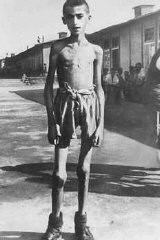
Detail of the 14th Street facade of the United States Holocaust Memorial Museum. Washington, DC, April 2003.
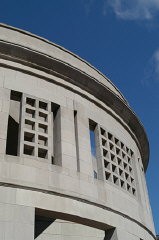
A 1915 portrait of Willem Arondeus. During World War II, Arondeus, a gay member of the Dutch resistance, participated in an attack on the Amsterdam Population Registry offices. His group set fire to several thousand files in an attempt to destroy government records of Jews and others sought by the Nazis. Soon after the attack, his unit was betrayed. The Nazis arrested and executed Arondeus in 1943. Blaricum, the Netherlands, 1915.
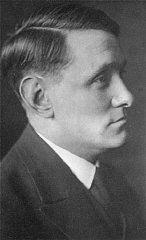
Street scene in the Jewish quarter of Paris before World War II and the Holocaust. Paris, France, 1933–39.
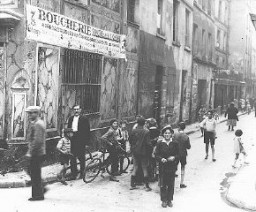
Abraham and his family fled from Berlin to Amsterdam in October 1938. They found refuge in the Netherlands until January 28, 1943, when all the members of the Muhlbaum family, except Abraham, were deported to Westerbork. Abraham escaped over the rooftops during the round-up. He gradually established a new life as a member of a Dutch resistance group that included Joop Westerweel. In 1944, Abraham was arrested as a member of the resistance (his Jewish identity remained hidden). He was held…
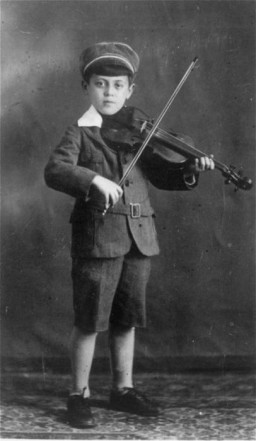
Nazi propaganda constantly reinforced the notion that Hitler was the embodiment of the national will. Here, a determined looking Hitler in military dress stands with clenched fist, poised for action above the adoring crowd. The text on the poster says "Yes! Leader, We Follow You!" (Ja! Führer wir folgen Dir!) This poster, designed for a 1934 public referendum on uniting the posts of German chancellor and president, conveys unanimous popular support for Hitler.
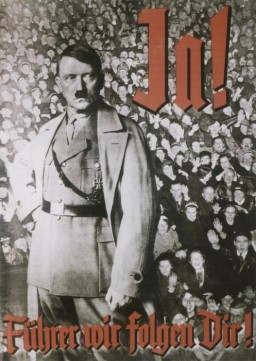
Close-up studio portrait of a young Jewish girl named Anna Glinberg, who was later killed during the mass execution at Babi Yar.
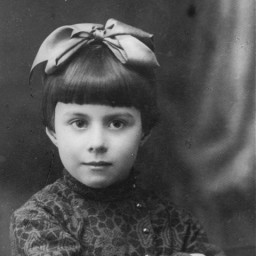
1936 portrait of two-year-old Mania Halef, a Jewish child, who was later killed during the mass execution at Babi Yar.
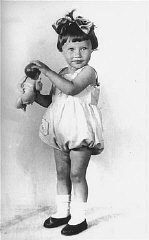
1936 poster: "All of Germany Listens to the Führer with the People's Radio." The poster depicts a crowd surrounding a radio. The radio looms large, symbolizing the mass appeal and broad audience for Nazi broadcasts. Bundesarchiv Koblenz (Plak003-022-025)

Prewar studio portrait in Sighet of Jewish siblings Suri and Ari Deutsch, both of whom died in the Holocaust. This photograph comes from the album of their cousin, Rosalia Dratler Roiter. Rosalia was deported to and died at Auschwitz. Sighet, Romania, 1937.
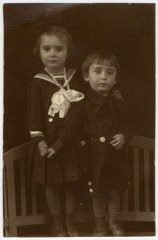
1943 portrait of Edgar Krasa drawn by Leo Haas in Theresienstadt. Haas (1901-1983) was a Czech Jewish artist who, while imprisoned in Nisko and Theresienstadt during World War II, painted portraits and produced a large volume of drawings documenting the daily life of the prisoners.
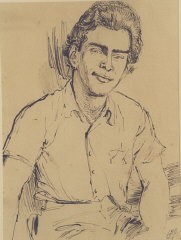
1943 still life of a violin and sheet of music behind prison bars by Bedrich Fritta (1909–1945). Fritta was a Czech Jewish artist who created drawings and paintings depicting conditions in the Theresienstadt camp-ghetto. He was deported to Auschwitz in October 1944; he died there a week after his arrival.
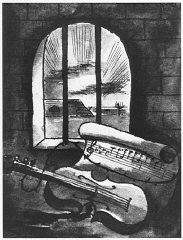
1943 watercolor landscape of Theresienstadt painted by Otto Samisch. Despite the terrible living conditions and the constant threat of deportation, Theresienstadt had a highly developed cultural life.
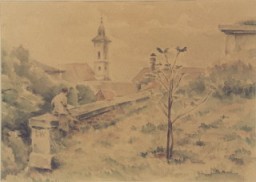
This poster from 1945 shows an embattled German family proclaiming, "Frontline City Frankfurt will be held!" A Frontstadt was a city Hitler declared must be defended against Allied attack at all costs. In the final months of the war, propaganda efforts were directed at rallying the populace for a final defense of the country.
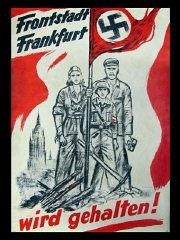
Miles Lerman (who married Regina's sister Krysia), Lodz, Poland, 1945.
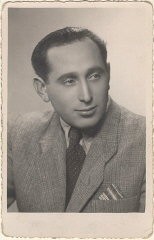
Photograph of Regina (Renia) taken on June 2, 1945, in Lodz, Poland.
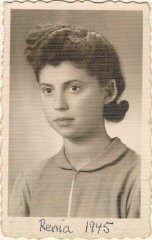
1945 portrait of Eta Wrobel who was born on December 28, 1918, in Lokov, Poland. During the Holocaust, Eta helped organize an exclusively Jewish partisan unit of close to eighty people. She was the only child in her family of ten to survive.
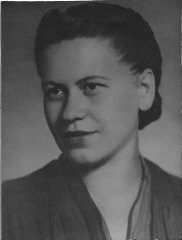
A Czech postage stamp issued in 1957, commemorating the fifteenth anniversary of the destruction of Lidice.
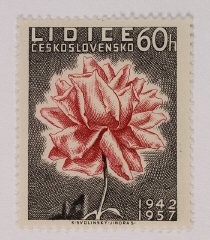
Members of the United States Holocaust Memorial Council pose with President George Bush (third from right) on the occasion of the 1989 Days of Remembrance. Benjamin Meed is fourth from the right. Washington, DC, 1989. Learn more about Days of Remembrance.
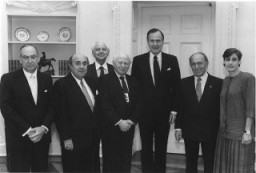
Scene during the 2001 Days of Remembrance ceremony, in the Rotunda of the US Capitol. Flags of the liberating divisions feature prominently in the Museum's Days of Remembrance ceremonies. Washington, DC, 2001.
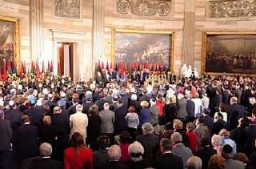
Benjamin Meed (left) with Fred S. Zeidman, Colin L. Powell, Elie Wiesel, and Ruth B. Mandel at the 2003 Days of Remembrance ceremony in the US Capitol Rotunda.
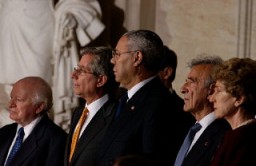
Blanka was an only child in a close-knit family in Lodz, Poland. Her father died in 1937. After the German invasion of Poland, Blanka and her mother remained in Lodz with Blanka's grandmother, who was unable to travel. Along with other relatives, they were forced into the Lodz ghetto in 1940. She and her mother were deported to the Ravensbrueck camp in Germany in 1944. From Ravensbrueck, Blanka and her mother were sent to a subcamp of Sachsenhausen. Blanka was forced to work in an airplane factory…
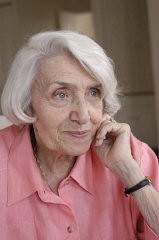
Born Naftali Saleschutz, Norman was the youngest of nine children in a devout Hasidic Jewish family. They lived in Kolbuszowa, Poland. In the Hasidic tradition, he wore a long black coat and shoulder-length earlocks. He first faced antisemitism in the second grade when his teacher cut one earlock off each Jewish boy.
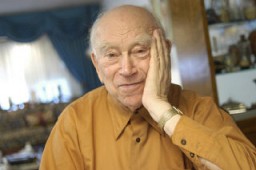
Born as Regina Laks in 1929, she was raised in Starachowice, an industrial city in central Poland. Her mother, Pola Tennenblum, was an active member of the Zionist movement. Her father, Isaac Laks, was an engineer in the lumber industry. She had two older sisters.
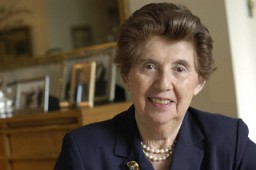
Aron was born to a middle-class Jewish family in Slonim, a part of Poland between the two world wars. His parents owned a clothing store. After studying in a technical school, Aron worked as a motion-picture projectionist in a small town near Slonim. The Soviet army took over Slonim in September 1939. War broke out between Germany and the Soviet Union in June 1941. Aron returned to Slonim. The Germans soon occupied Slonim, and later forced the Jews into a ghetto.
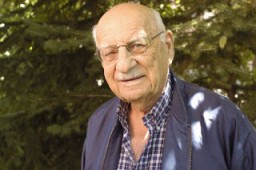
This 2005 Syrian edition of the Protocols of the Elders of Zion claims that the terrorist attacks of September 11, 2001, were orchestrated by a Zionist conspiracy. The final chapter predicts the eventual destruction of the State of Israel. Published in Damascus, Syria, 2005. Gift of the Embassy of Israel.
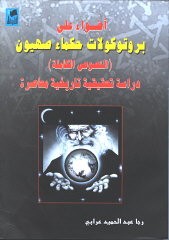
US soldiers of the 8th Infantry Regiment seek cover behind hedges and signs to return fire to German forces holding the town of Libin. Belgium, September 7, 1944.
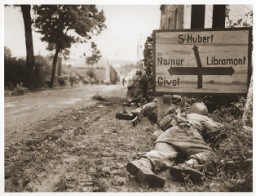
In Hamburg, members of the SA and students from the University of Hamburg burn books they regard as "un-German." Hamburg, Germany, May 15, 1933.
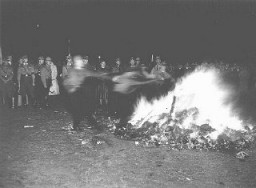
At the Neu Freimann displaced persons camp, a boy displays the tattooed number on his arm to a photographer. Other children look on. Neu Freimann, Munich, Germany, between 1945 and 1949.
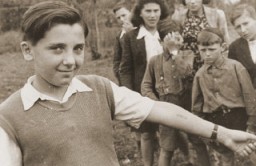
A British soldier removes refugees, wounded resisting the British, from the ship Exodus 1947. Haifa, Palestine, July 20, 1947.
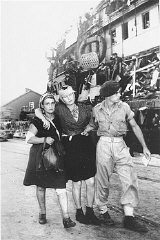
A British soldier watches women SS guards who were forced to carry victims' corpses to mass graves. Bergen-Belsen, Germany, after April 15, 1945.
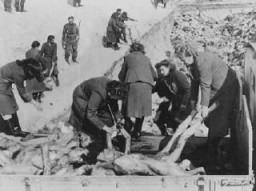
A building burns during the suppression of the Warsaw ghetto uprising. The photograph was taken through the window of a building adjacent to the ghetto. Warsaw, Poland, May 1943.

Entrance to the courtyard, marked with a Star of David, of a building designated for Jews. Budapest, Hungary, after April 2, 1944.
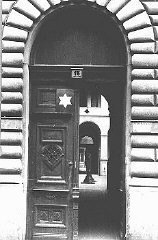
Amon Goeth (front left), commandant of the Plaszow camp, under escort to the courthouse in Kraków for sentencing. He was sentenced to death at his postwar trial on war crimes charges. Kraków, Poland, August 1946.
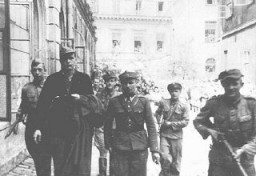
A captured Jewish resistance fighter who was forced out of his hidden bunker by German soldiers during the Warsaw ghetto uprising. Warsaw, Poland, April 19-May 16, 1943.
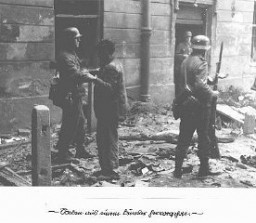
A ceremony of the pro-Nazi German American Bund. Kenosha, Wisconsin, United States, October 16, 1937.
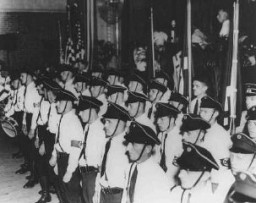
A chaplain with the 82nd Airborne Division helps a survivor board a truck that will evacuate him from the Wöbbelin concentration camp to an American field hospital. Germany, May 4, 1945.
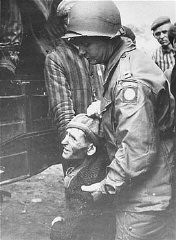
A child survivor arrives at Haifa port on board the Aliyah Bet ("illegal" immigration) ship Mataroa. The British denied the passengers entry into Palestine and deported them to Cyprus detention camps. July 15, 1945.
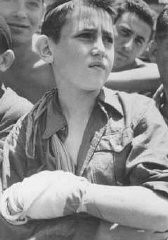
Soon after liberation, an emaciated child survivor is carried out of camp barracks by Soviet first-aid workers. Auschwitz, Poland, after January 27, 1945. This photograph is a still image from Soviet film of the liberation of Auschwitz.
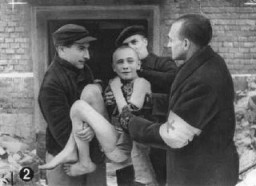
A young child sits among luggage while waiting to depart the Deggendorf displaced persons camp. Deggendorf, Germany, 1945-46.
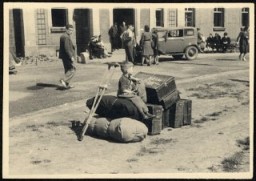
A child wears the compulsory Jewish badge. The "Z" stands for the word "Jew" (Zidov) in Croatian. Yugoslavia, ca. 1941.
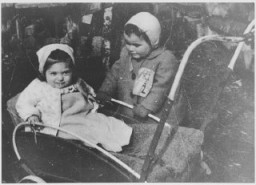
A class of boys from the school in Oradour. All of the people pictured here were killed by the SS during the June 10, 1944, massacre. Oradour-sur-Glane, France, photograph taken between 1940 and June 1944.
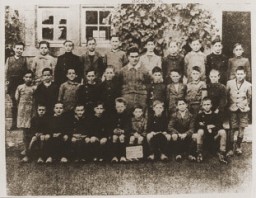
First grade pupils, both Jewish and non-Jewish, study in a classroom in a public school in Hamburg. Germany, June 1933.
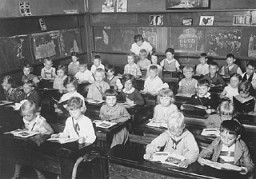
American Legion officials touring Germany and Austria pass through the Dora-Mittelbau concentration camp, near Nordhausen. Germany, after June 6, 1945.
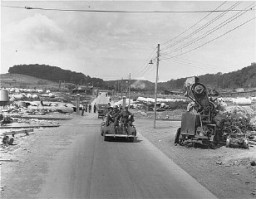
A concert in the Oranienburger Street synagogue organized by the Cultural Society of German Jews. Berlin, Germany, 1938.
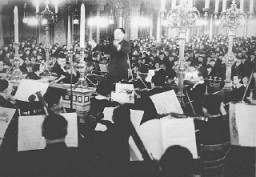
A couple dances at the Eldorado, a nightclub frequented by members of Berlin's gay and lesbian community. The nightclub, along with other similar establishments, was closed by the Nazi government in the spring of 1933. Photograph taken in Berlin, Germany, 1929. Learn more about the Eldorado.
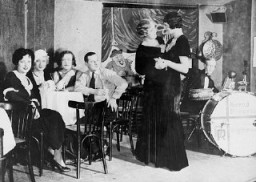
A cheering crowd greets Adolf Hitler as he enters Vienna. Austria, March 1938. After a prolonged period of economic stagnation, political dictatorship, and intense Nazi propaganda inside Austria, German troops entered the country on March 12, 1938. They received the enthusiastic support of most of the population. Austria was incorporated into Germany the next day.
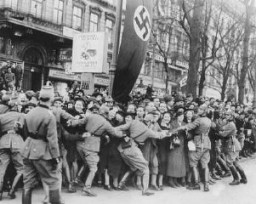
A crowd in front of the Berlin Cathedral (Berliner Dom) cheers the declaration of World War I. Berlin, Germany, August 1914. Many enthusiastically believed that World War I would be over quickly. Instead, the war became a stalemate of costly battles and trench warfare. It lasted for years and was the first great international conflict of the twentieth century. The impact of the conflict and its divisive peace would reverberate in the decades following.
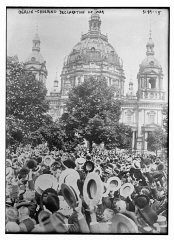
A large crowd gathers in front of the Rathaus to hear the exhortations of Julius Streicher during the Beer Hall Putsch, Hitler's early unsuccessful attempt to seize power. Munich, Germany, November 1923.
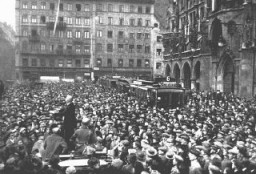
We would like to thank Crown Family Philanthropies, Abe and Ida Cooper Foundation, the Claims Conference, EVZ, and BMF for supporting the ongoing work to create content and resources for the Holocaust Encyclopedia. View the list of donor acknowledgement.